
Hogan Lovells 2024 Election Impact and Congressional Outlook Report
 Search
Search


 Search
Search

In this publication which first appeared in World Trademark Review, we discuss 'green brands' - how trademark law can promote sustainable business practices and help consumers to make informed choices about green goods. A significant hurdle for applicants is how to combine non-distinctive green elements with more distinctive elements particular to that mark.
Covid-19 still dominates headlines around the world but before the pandemic hit there was another existential threat to humanity slowly garnering attention – and it has not gone away.
Over the past several years the dangers of climate change have been creeping inexorably up the agenda of mainstream news. Scientists around the world have surpassed all expectations in developing not just one but multiple vaccines for covid-19. There is no such straightforward fix for the effects of climate change. However, keeping it front and centre of political, social and economic agendas is key – and that is where trademark law could prove an unexpected but welcome ally.
When it comes to safeguarding new green technologies, the focus is often on protecting the actual technical innovation by applying for patents and utility models. In principle, protection under design and copyright law is also conceivable. However, an environmentally friendly technology or a sustainable product has no commercial potential until it is marketed. This is where trademark protection plays a crucial role. Trademarks are the main instruments for communicating to the relevant public that products or services are environmentally friendly and use sustainable technologies, thus fully exploiting their economic potential.
As a rule, four options for protection should be on the radars of companies that want to announce and sell a green innovation on the market:
Although each differs in terms of function and effect, they can all contribute to the successful marketing and the protection of environmentally friendly and/or sustainable innovations.
Individual marks are the most frequently applied for and probably the best-known type of protection. Their main function is to guarantee a specific commercial origin, allowing the relevant product or service to be distinguished from those of others. In the area of green innovations, a wide variety of individual trademarks can be applied to technologies or products. In addition to conventional word marks, a green or sustainable image can be communicated, in particular by word/figurative marks or purely figurative marks.
When applying for such marks, applicants must overcome the hurdle of distinctiveness. While terms such as ‘green’, ‘eco’, ‘climate’, ‘re’ or ‘fair’ are extremely popular choices and green logos and signs are currently in vogue, they seldom meet the criteria for registration as all too often they are purely descriptive.
Nevertheless, numerous registrations that clearly communicate the sustainability of the advertised goods or services can be found in trademark registers. An example of a successful individual green mark is the word/figurative trademark CARE FOR CLIMATE, used by Puraglobe to sell sustainably produced oil and lubricant products.

The EU word/figurative trademark WECHSEL FAIR also shows that green terms or graphical elements combined with other distinctive word and/or figurative components can qualify for protection. The mark represents an ecological electricity and gas comparison portal that plants trees and creates habitats for wild bees free of charge every time a consumer switches provider.
If there is a lack of distinctiveness, components of the sign that clearly point to the sustainability of the product or service will be less important than distinctive components during the assessment of overall impression. Consequently, only minor significance will usually be attributed to such components when determining the scope of protection of green individual marks.
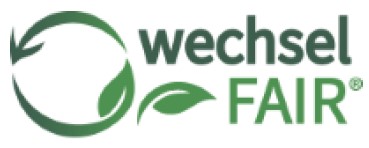
However, this does not change the significance of green words or figurative elements for the marketing potential of complex trademarks. In the area of sustainable goods and services, it is precisely those non-distinctive green components that convey the message of environmental friendliness or sustainability.
Collective marks offer a second possibility of protection. Unlike individual marks, collective marks indicate that a product originates from a particular association, with the mark being owned by that association.
Looking at the example of the well-known collective figurative mark DER GRÜNE PUNKT (the green dot), it is clear how companies can benefit from green collective mark protection.
The sign indicates that the packaging concerned can be collected and recycled through a specific waste disposal system. Companies can therefore use DER GRÜNE PUNKT to indicate that their packaging will be dealt with in a sustainable manner. The Court of Justice for the European Union has recently confirmed that such indications can influence consumer purchasing decisions (CJEU, 12 December 2019 (C-143/19 P), margin no 70).
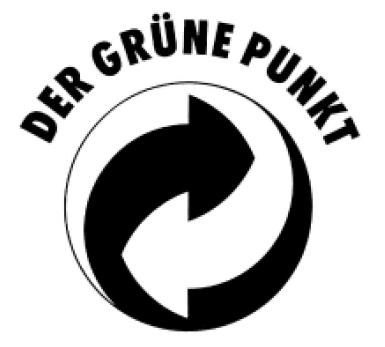
The third option is a certification mark. This is used for signs that are intended to certify that goods or services have certain characteristics and can guarantee, for example, that strict environmental regulations have been observed during a production process or that a product or technology is sustainable.
The main function of a certification mark is therefore to provide a guarantee, rather than to signify origin. However, the owners of such seals can only be companies that do not themselves offer the goods or services in question. For market players that want to invest in and market sustainable ideas, it can make sense to look for suitable means of proving the quality of their goods and services.
For example, the GRÜNER KNOPF (green button) certification mark assures consumers that the textile companies that are offering products bearing the mark fulfil certain duties of care with regard to human rights and the environment, and that the products themselves meet certain social and environmental criteria. In July 2019 GRÜNER KNOPF was the first national certification mark to be registered by the German Patent and Trademark Office for the German Federal Ministry for Economic Cooperation and Development.
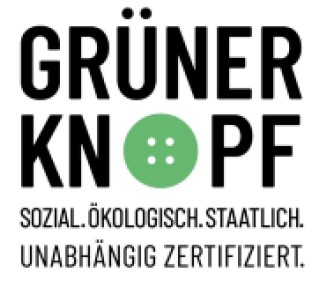
The GREEN BRAND sign is an example of an EU certification mark. Licensees of the mark can obtain certification for the ecologically sustainable quality of their products – as ensured by transparent testing, validation and control procedures.
To qualify, companies must make various ecological and sustainable business decisions. These include:
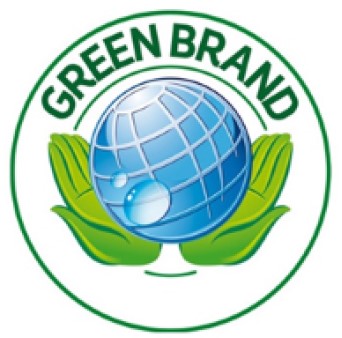
Finally, PDOs and GIs offer another possibility for green IP protection under trademark law. Such protection may be of particular interest to manufacturers and producers of food and agricultural products, including fruit and vegetables, fish, meat and meat products, cheese, baked goods or beer.
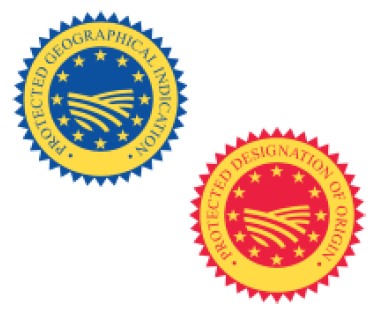
An important pre-requisite in this respect is the link between the characteristics of the product and its manufacture in the region of origin. Designations of origin require a particularly close link; all production steps must take place in the region in question.
Such protection can play a crucial role for companies that want to be involved in developing sustainable, environmentally friendly business practices. Against the backdrop of advancing globalisation and the associated problem of high CO2 emissions in the manufacture and transport of food, consumers are increasingly demanding goods that have been produced regionally and in a sustainable manner. PDOs and GIs thus allow smaller businesses to better market their products.
PDOs and GIs alone seldom offer any indication of environmentally friendly product characteristics or manufacturing processes. To find this information, consumers would need to look at the product specification recorded in the register. However, PDOs such as ALLGÄUER BERGKÄSE (mountain cheese from the Allgäu region) can, in addition to indicating a certain quality, prove attractive to environmentally conscious consumers thanks to the regional connection. Completing all production steps in the indicated region of origin guarantees a significantly better environmental footprint than conventional, non-regional products.
Occasionally the sustainability of products labelled in this way can even be inferred from the indication itself.
For example, the element ‘bio’ (meaning ‘organic’) in the GI OBERLAUSITZER BIOKARPFEN (carp from the Upper Lusatia region) notifies consumers that fish bearing this label have been farmed organically. Combining regional connections with sustainability aspects in this way offers significant marketing potential, in particular for medium sized companies that are well known and connected regionally.
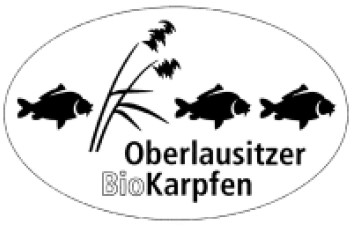
The potential of green trademarks in developing and marketing sustainable products and technologies is enormous. Trademark law offers many incentives for investments in sustainable ideas and concepts and can serve as a means for protecting these investments. Thinking along these lines is not limited to individual industries, either. The ways in which different protection instruments under trademark law can be used are as diverse as those who use of them.
However, despite the buzz surrounding sustainable and environmentally friendly innovations, interested companies should be wary of exposing themselves to the accusation of ‘greenwashing’ when building their IP portfolios. This term refers to any behaviour on the part of companies aimed at falsely portraying themselves or their products as being particularly environmentally friendly, sustainable, ethically correct or fair trade, and thus appearing to be green. Such misleading conduct is also problematic from the perspective of competition law.
Therefore, in order to avoid legal risks, a green facade of IP rights must be matched by an authentic will to develop companies in a sustainable way.
Attention on the issue of climate change began to coalesce with the Fridays for Future movement, spearheaded by Greta Thunberg. Complex questions about the clean energy transition and sustainability also found their way into broader public debate. At the EU level the European Commission sparked discussion with its European Green Deal, which set the ambitious goal of making Europe the first climate-neutral continent by 2050.
From a global perspective, particularly since the inauguration of the new US president, Joe Biden, a mood of optimism can be felt again. Leading central banks have committed to making large investments in green securities, while the Bank for International Settlements has expanded its commitment to promote environmentally friendly projects to a fund volume of at least $2 billion. In addition, European Central Bank President Christine Lagarde has announced that the bank is creating a dedicated centre for climate change.
Despite the ambitious goals set by politicians, it is clear to all involved that a real transformation towards sustainability cannot succeed without extensive involvement from business.
Alongside the need to set legislative objectives and frameworks, further huge investments in environmentally friendly technologies and concepts are required to establish an economic system that is focused on sustainability while still being efficient. It is therefore unsurprising that WIPO chose the motto “Innovate for a Green Future” for the 20th anniversary of World IP Day on 26 April 2020.
Registering IP rights enables companies to protect investments in sustainable, environmentally friendly technologies, products or services and to amortise financial expenses. Strategically building up attractive IP portfolios in turn makes it easier to attract high-performing partners and investors for future projects.
Companies can find suitable partners for such projects or licensees for their own IP assets on platforms such as WIPO Green. The network aims to bring together environmentally conscious players around the world and help them to better leverage the potential of sustainable technologies and to release synergy effects in the area of green intellectual property.
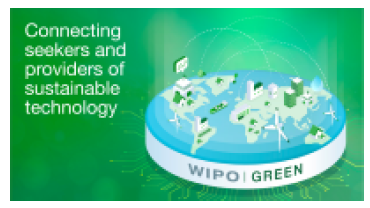
President Biden’s first acts in office have sent a clear message to the global alliance fighting climate change that the United States is once again an important partner. As the covid-19 pandemic hopefully abates, the issue of environmentally friendly and sustainable solutions should become a greater focus of attention for those in politics and business. Companies will be looking firmly ahead; when they consider the issue of long-term orientation and development, they are likely to examine their own product lines and concepts from the perspective of sustainability and environmental friendliness in accordance with consumer demand for green solutions.
Given the special marketing potential of green trademarks, companies should not shy away from a careful analysis of their own trademark strategy and portfolio. Although the costs of realigning a trademark portfolio are likely to be significant, they could well be recouped if green products can be marketed successfully. The future is green – and the economic potential of sustainable goods and services worldwide is immense.
Authored by Patrick Fromlowitz and Nikolaus von Bargen